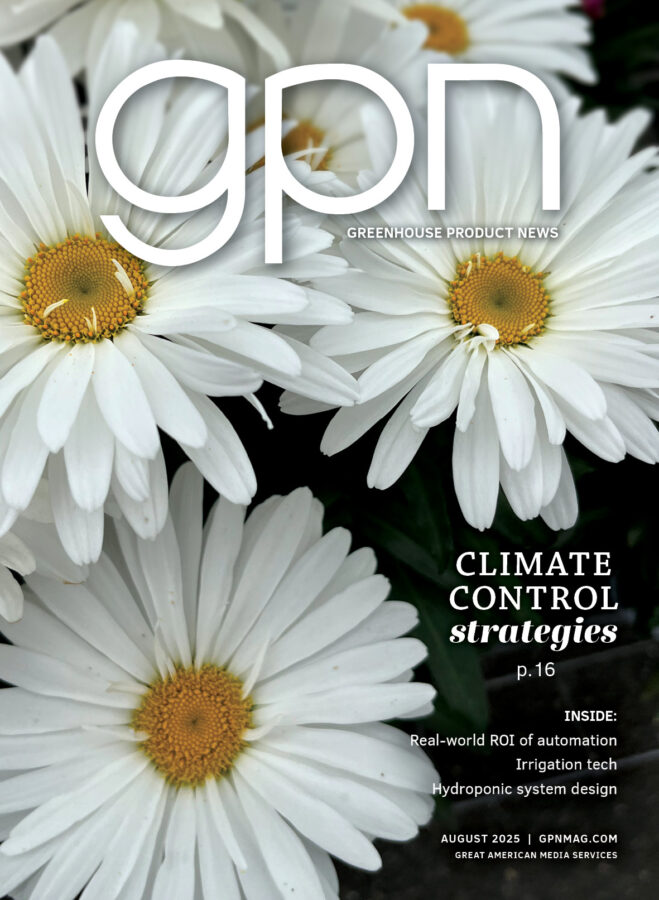
Culture Report: Ornamental kale Crystal series
Ornamental kale has long been a staple for the fall market, and American Takii is leading the way with the recently released Crystal series from seed.
The unique glossy leaf enhances the overall appearance of the plant and brightens the colors within the Crystal series. Ornamental kale works in many garden settings — from single plant containers to mixed combos and mass plantings. Typically, kale are very durable and will last late into the fall and early winter.
The kale Crystal series is a medium- to high-vigor series, with relatively short plug production times and quick finish times in the final container. Plant growth regulators (PGRs) are generally effective on kale. Depending on the growing environment, applications of PGRs may begin in the early stages of plug life and later in the finished container, as needed. Check the label of your preferred PGR for recommended rates.
The Crystal series consists of four varieties: Red, Dark Red, Pink and Snow, which are best suited for late-summer to fall production and are typically sold alongside mums and other fall products. Crystal, like most other series, is dependent on cool temperatures to bring out the bright colors. Sustained temperatures ranging between 55 to 65° F will initiate the coloring phase. The cooler the temperature is and the longer it holds will determine the quickness of colors emerging.
If the average temperature goes above 77° F, leaf color that may have already developed could revert to green. Color can re-develop when night temperatures drop back to minimums below 55° F for extended periods. The exception can be white varieties, which upon developing green edges may not revert to white even when temperatures drop.
For all ornamental kale, nutrition is a critical part of success throughout the entire plant life cycle. High nitrate levels can interfere with adding color to kale, so it is recommended to cut back on fertilization as you enter the coloring phase. However, during the fall season, weather conditions will still be warm and mild during the daytime hours, and the demands for nutrition to maintain the lower parts of the plant remain important. If the nitrogen level drops too low, the lower leaves of the plant will begin to yellow and become unsightly.
Make sure to watch nitrogen levels in the soil until time of sale. Consider using fertilizers that contain less ammonia nitrate. A good calcium and magnesium-based formula (13-2-13- 6-2 or similar) will help maintain good plant health and reduce the chance of plant stretch.
In addition to nutrition, sowing time is also important. If sown too late, plants will not develop many leaves due to the short vegetative growth period. With fewer leaves, the colored part of the plant will be very small.
'Crystal Red'
'Crystal Snow'
'Crystal Deep Red'
SPECS FOR FLOWERING KALE F1 CRYSTAL SERIES (BRASSICA OLERACEA)
• Flower/Garden Size: Garden height of 8 inches and 12 or more inches wide
• Market Use: Bedding, spring and fall sales, mass plantings, landscape, and mixed containers
• Novelty Characteristics: Glossy leaves, round ruffled leaf type
CULTURAL RECOMMENDATIONS:
• Sowing: 200 or 288 cell trays
• Finish Container: 4-inch pots and larger, popular for gallon containers
• Germination: Emergence at four to six days with temperatures at 65 to 70° F; lower the temperature to 60 to 65° F after emergence; cover seed
• EC (Electrical Conductivity): Emergence to cotyledon expansion = ~0.75 mS/cm; Cotyledon expansion to plug finish = ~1.0 mS/cm
• Plug Finish Time: four to five weeks in 288 trays
• Transplant: Approximately 25 to 30 days after sowing, depending on the temperature and cell tray size, at three to four true leaf stage. To prevent poor growth later, do not transplant young plants if the root is coiled. If transplanted under high temperatures, damage to roots may occur. Dry soil will impede proper root development.
• Young Plant Stage: Use well-drained and sterile growing media and keep good ventilation to avoid stretching.
• Days to color: Approximately 90 days from sow to color
• Temperature: 65 to 75° F during the day and below 55° F at night for approximately two weeks
• EC: 2.0 to 3.5 mS/cm (pour through method)
• pH: 5.7 to 6.4
PGR TREATMENTS
Effective PGRs include Cycocel at 1,500 ppm one time and Bonzi drench 2 to 5 ppm one time.
Earlier work with kale has shown B-Nine, Cycocel or a combination spray of the two products to be very effective in controlling plant height. However, B-Nine can suppress color formation under certain conditions, so it should be applied at the grower’s discretion. Alternatively, trials with the Bonzi/Paczol (paclobutrazol) drench have resulted in very effective growth control and often enhance color formation. Under cold spring conditions, Bonzi rates of 2 to 5 ppm will significantly reduce plant stretch. Under warm fall conditions, the rates may need to be increased to 8 to 10 ppm for best results. Some PGRs can help in color response, while others can inhibit the desired colors.
For an enhanced reading experience, view this article in our digital edition by clicking here.








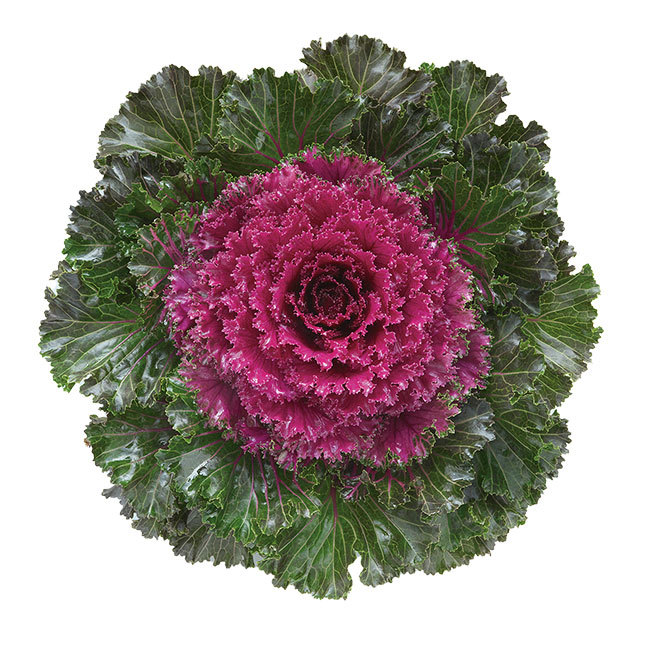
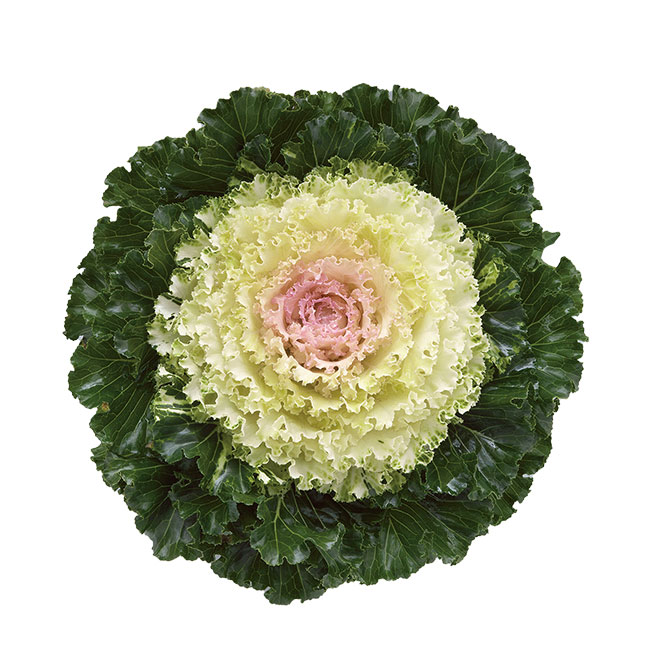
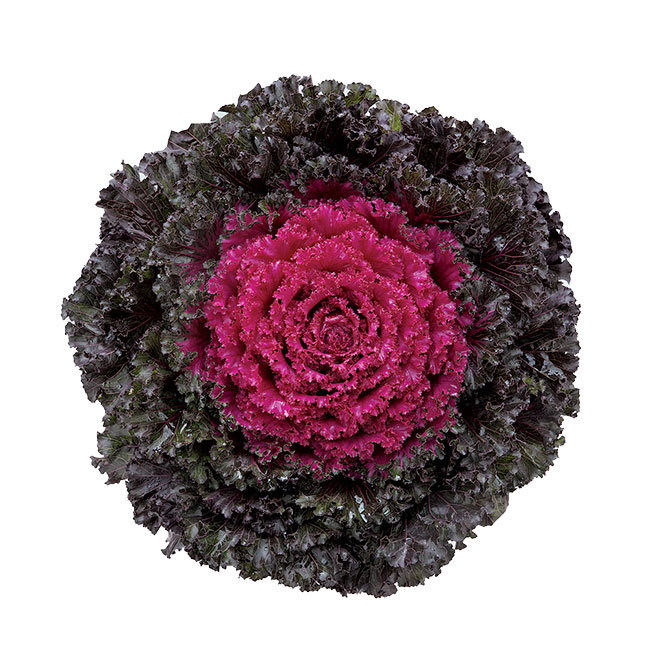
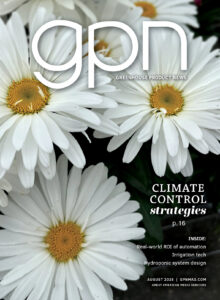
 Video Library
Video Library 

















